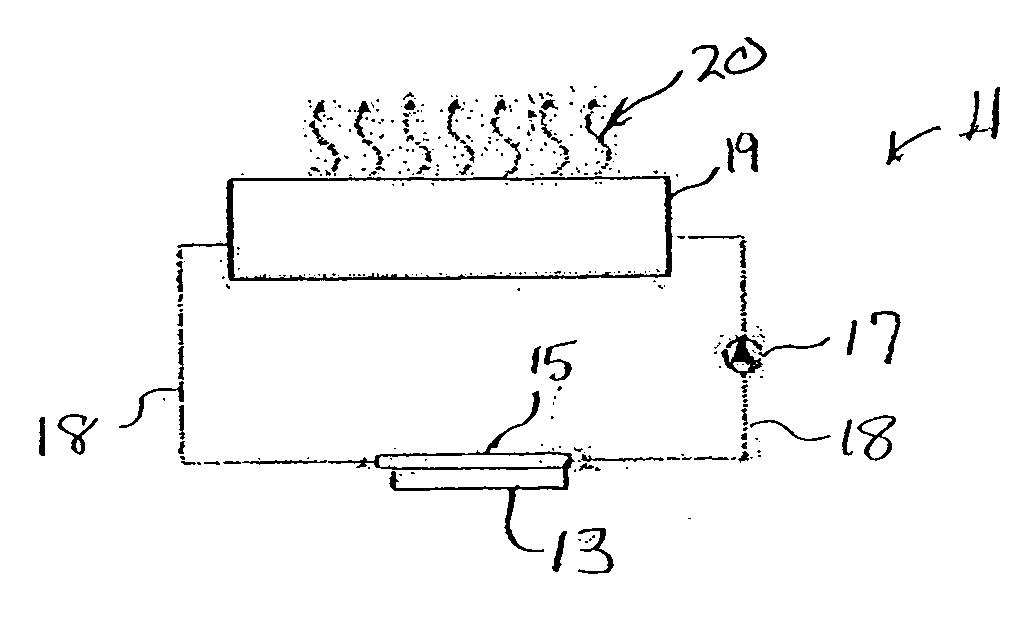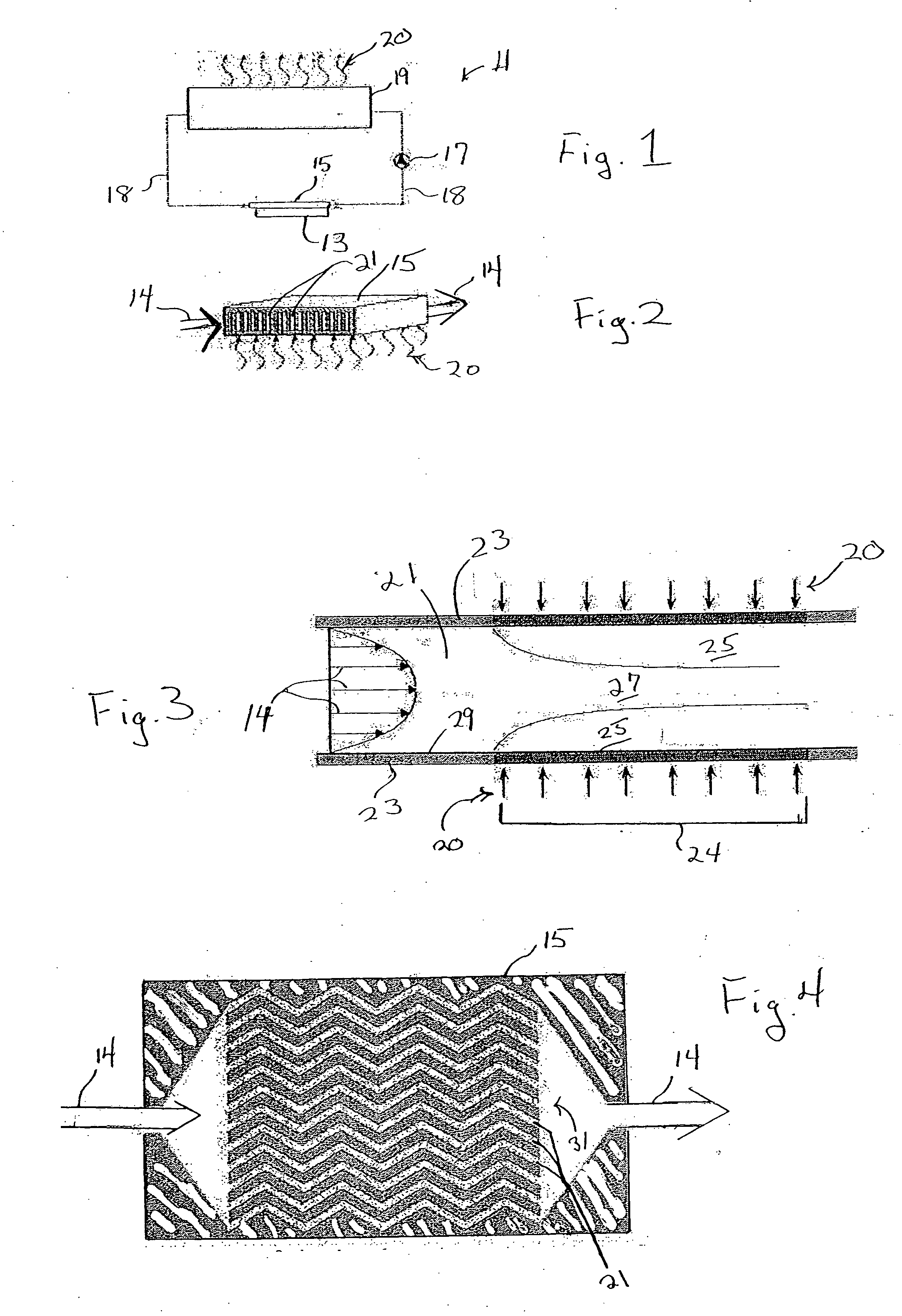Microchannel heat exchanger with micro-encapsulated phase change material for high flux cooling
- Summary
- Abstract
- Description
- Claims
- Application Information
AI Technical Summary
Benefits of technology
Problems solved by technology
Method used
Image
Examples
example 2
[0046] Suspension: water and microencapsulated Heptadecane [0047] Mass fraction of PCM: 30wt % [0048] Latent heat of PCM: 237 kJ / kg [0049] Microchannel heat exchanger dimensions: [0050] Length: 2 cm [0051] Width: 1 cm [0052] Channel height: 1 cm [0053] Channel width: 400 micron [0054] Channel wall thickness: 200 micron [0055] Number of channels: 16 [0056] Allowable temperature increase of the suspension: 10° C. [0057] Achievable heat flux: 200 W / cm2 [0058] Effective specific heat capacity of the slurry based on 10° C. temperature rise: 10.7 kJ / kg° C.
[0059] Ratio of the effective specific heat capacity of slurry to that of pure water: 2.6
Water coolingwater / PCMParameterin microchannelslurry coolingFluid velocity1.5m / s0.64m / sReynolds number717281Pressure drop3.5kPa1.5kPaPumping power33.6mW6.1mW
[0060] The above comparison shows that by replacing the water with PCM slurry, the pressure drop was reduced to more than half, reducing the pumping power requirement by about five times while...
PUM
| Property | Measurement | Unit |
|---|---|---|
| melting point | aaaaa | aaaaa |
| temperature | aaaaa | aaaaa |
| height | aaaaa | aaaaa |
Abstract
Description
Claims
Application Information
 Login to View More
Login to View More - R&D
- Intellectual Property
- Life Sciences
- Materials
- Tech Scout
- Unparalleled Data Quality
- Higher Quality Content
- 60% Fewer Hallucinations
Browse by: Latest US Patents, China's latest patents, Technical Efficacy Thesaurus, Application Domain, Technology Topic, Popular Technical Reports.
© 2025 PatSnap. All rights reserved.Legal|Privacy policy|Modern Slavery Act Transparency Statement|Sitemap|About US| Contact US: help@patsnap.com



